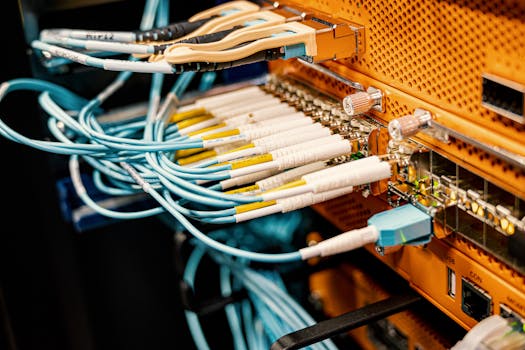From Copper to Fiber: The Revolution of Internet Infrastructure in Africa

From Copper to Fiber: The Revolution of Internet Infrastructure in Africa
The Focus Keyword From Copper to Fiber marks the beginning of a new era in internet infrastructure in Africa. For years, the continent has relied on traditional copper-based networks to connect to the internet. However, with the increasing demand for faster and more reliable internet services, there has been a significant shift towards fiber optic systems. This revolution is transforming the way people connect and access information, and it is having a profound impact on the socio-economic development of the continent.
Introduction to Fiber Optics
Fiber optic technology uses thin glass or plastic fibers to transmit data as light signals. This technology has several advantages over traditional copper-based systems, including faster data transfer rates, greater bandwidth, and lower latency. Fiber optic systems are also more reliable and less prone to interference, making them ideal for high-speed internet applications.
In Africa, the adoption of fiber optic technology has been driven by the need for faster and more reliable internet services. Many African countries have invested heavily in fiber optic infrastructure, including undersea cables, terrestrial fiber networks, and last-mile connectivity solutions. These investments have enabled the continent to leapfrog traditional copper-based systems and join the global digital economy.
The Benefits of Fiber Optic Technology
The benefits of fiber optic technology are numerous and far-reaching. One of the most significant advantages is the ability to support high-speed internet applications, such as video streaming, online gaming, and cloud computing. Fiber optic systems can also support multiple services, including voice, data, and video, making them ideal for modern telecommunications networks.
Another significant benefit of fiber optic technology is its ability to support economic development. By providing fast and reliable internet services, fiber optic systems can enable businesses to operate more efficiently, communicate with customers and suppliers more effectively, and access new markets and opportunities. This, in turn, can lead to job creation, economic growth, and poverty reduction.
In addition to its economic benefits, fiber optic technology also has social benefits. By providing access to information and communication services, fiber optic systems can help to bridge the digital divide, promote education and learning, and improve healthcare outcomes. They can also enable people to connect with each other, regardless of their geographical location, and promote social cohesion and community development.
Challenges and Opportunities
Despite the many benefits of fiber optic technology, there are still several challenges to its adoption in Africa. One of the most significant challenges is the high cost of deployment, which can make it difficult for governments and private sector operators to invest in fiber optic infrastructure. There are also regulatory and policy challenges, including the need for supportive regulatory frameworks and policies to promote investment in fiber optic infrastructure.
Another challenge is the lack of digital literacy and skills, which can make it difficult for people to use fiber optic services effectively. There is also a need for more research and development, to improve the affordability and accessibility of fiber optic technology, and to develop new applications and services that meet the needs of African users.
Despite these challenges, there are also many opportunities for the adoption of fiber optic technology in Africa. One of the most significant opportunities is the potential for fiber optic systems to support the development of new industries and services, such as e-commerce, e-government, and e-health. There is also the potential for fiber optic technology to promote regional integration and cooperation, by enabling the free flow of information and communication services across borders.
Conclusion
In conclusion, the revolution of internet infrastructure in Africa from copper to fiber is a significant development that has the potential to transform the socio-economic landscape of the continent. By providing fast and reliable internet services, fiber optic systems can enable businesses to operate more efficiently, promote economic development, and improve the quality of life for African citizens. While there are still several challenges to the adoption of fiber optic technology, there are also many opportunities for its use to support the development of new industries and services, and to promote regional integration and cooperation.




